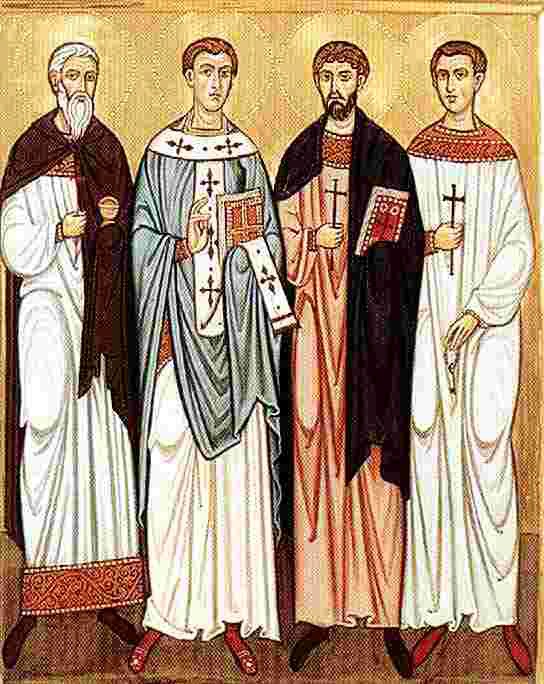Edited from various sources by Vito R. Carchedi, chairman of the Youngstown-Warren Chapter of the Society of St John Chrysostom.
Perhaps one of the channels that will carry us to unity will be the examples of our saints. Their veneration can be a bridge that vitally unites the Churches of East and West by promoting the exchange of spiritual gifts. Among these are the little known martyrs Sisinnius, Martyrius and Alexander. At dawn of the 29th of May, 397 in a valley of Trent in northern Italy, today called Val di Non, the three men became martyrs. Two of them, the deacon Sissinius and the reader Martyrius, were killed and burned. The third, the porter Alexander, was tied to a cart and pulled along the ground for a long way before, still alive, he was thrown into the flames where the bodies of his companions had burnt. Saint Vigilius, bishop of Trent, in a letter to Saint John Chrysostom recounted the martyrdom of the three saints; “The bodies of the first two having been thrown into the fire, Alexander remained standing, wounded, ready to give new witness to his faith…but the ardor of his faith drove back the flames…and he was gathered up to heaven.”
The three martyrs were monks originally from the church of Cappadocia, traditionally a land of saints and missionaries, and they were the first evangelizers of the Val di Non. Leaving their homeland and crossing Anatolia, Sissinio, Martyrius, and Alexander reached Milan. There they were welcomed by Saint Ambrose, bishop of Milan, and later sent to Trent to assist the young Bishop Vigilius who in turn sent them to exercise their apostolate in Anaunia (Val di Non). Vigilius, also destined to become a saint, in a letter to Saint Simplician wrote, “The lives of the three martyrs were an extraordinary testimony to their apostolic task of evangelization.” In spite of opposition from the pagans the three made many converts and Sissinius built a church. They were attacked in the church when the pagans tried to get them to participate in a polytheistic festival.
Vigilius sent their remains to John Chrysostom in Constantinople, to Simplician, Ambrose’s successor in Milan. Milan would later give some of those relics back to Sanzeno (the village where they were martyred).
{Sources: Messagero di sant’ Antonio. 1999. and Wikipedia, Vigilius of Trent.}

